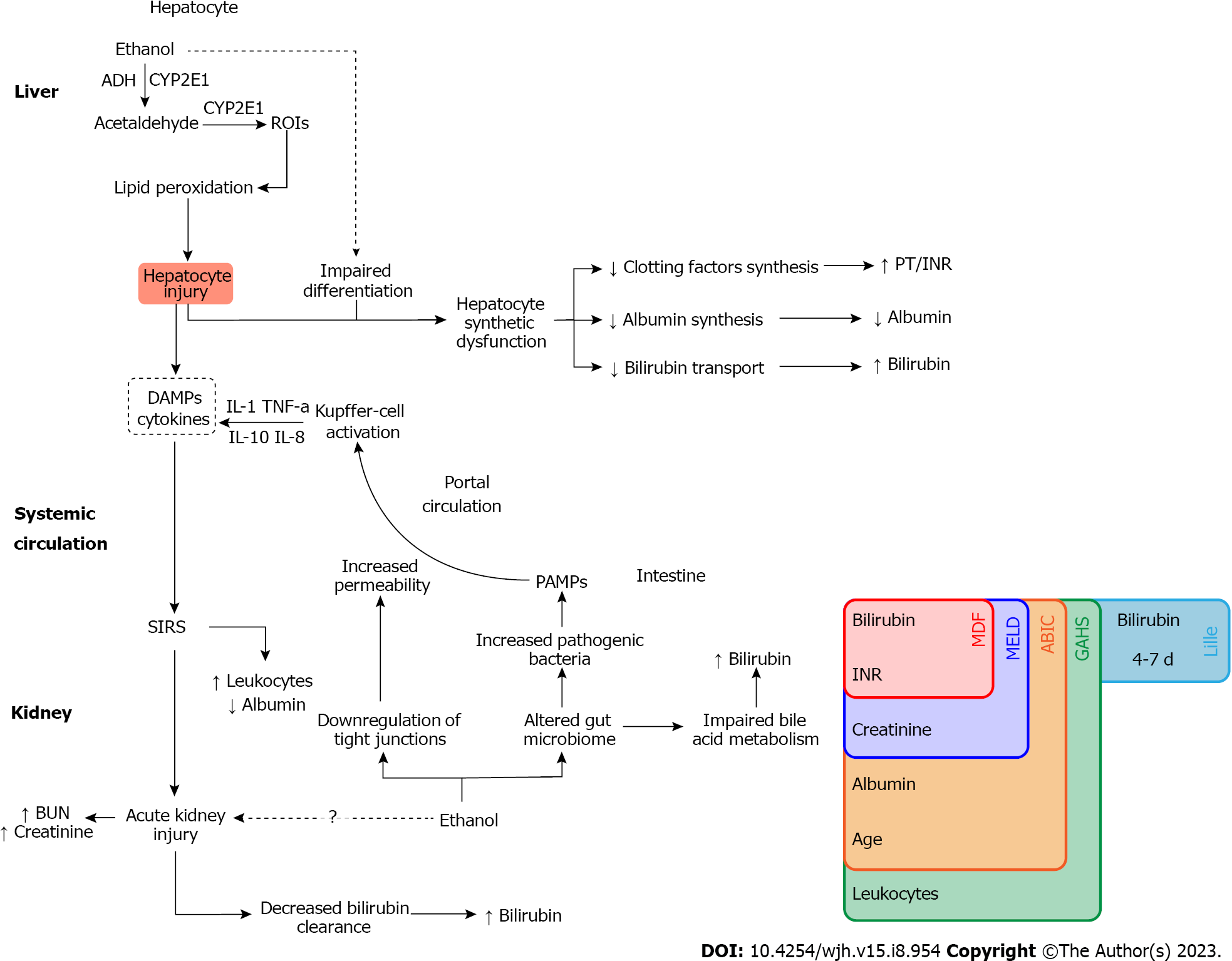Copyright
©The Author(s) 2023.
World J Hepatol. Aug 27, 2023; 15(8): 954-963
Published online Aug 27, 2023. doi: 10.4254/wjh.v15.i8.954
Published online Aug 27, 2023. doi: 10.4254/wjh.v15.i8.954
Figure 1 Pathophysiology of alcohol-associated hepatitis and correlation with prognostic scores.
As hepatocytes metabolize ethanol, reactive oxygen species are generated and mediate hepatocyte injury through lipid peroxidation. Injured hepatocytes become unable to adequately perform their functions, this includes albumin and clotting factor synthesis as well as bilirubin transport. Damaged hepatocytes release inflammatory molecules such as danger-associated molecular patterns known as “DAMPs” which favor a systemic inflammatory response system (SIRS). With systemic inflammation, white blood cell count rises, and albumin concentration decreases. SIRS also precipitates acute kidney injury, resulting in a rise in serum creatinine and body urea nitrogen concentrations and causes decreased bilirubin clearance. Large amounts of ethanol alter the gut microbiome and increase intestinal permeability through the downregulation of tight junctions which impairs bile acid metabolism. Furthermore, there is favored growth of pathogenic bacteria that pathogen-associated molecular patterns (PAMPs). PAMPs reach the portal circulation through increased intestinal permeability and activate Kupffer cells in the liver. Which in turn amplifies systemic inflammation and the resulting consequences through cytokine secretion[8]. PAMP: Pathogen-associated molecular patterns; SIRS: Systemic inflammatory response system; BUN: Blood urea nitrogen; MDF: Maddrey discriminant function; INR: International normalized ratio; MELD: Model for end-stage liver disease; GAHS: Glasgow alcoholic hepatitis score; PT: Prothrombin time.
- Citation: Mitri J, Almeqdadi M, Karagozian R. Prognostic and diagnostic scoring models in acute alcohol-associated hepatitis: A review comparing the performance of different scoring systems. World J Hepatol 2023; 15(8): 954-963
- URL: https://www.wjgnet.com/1948-5182/full/v15/i8/954.htm
- DOI: https://dx.doi.org/10.4254/wjh.v15.i8.954









